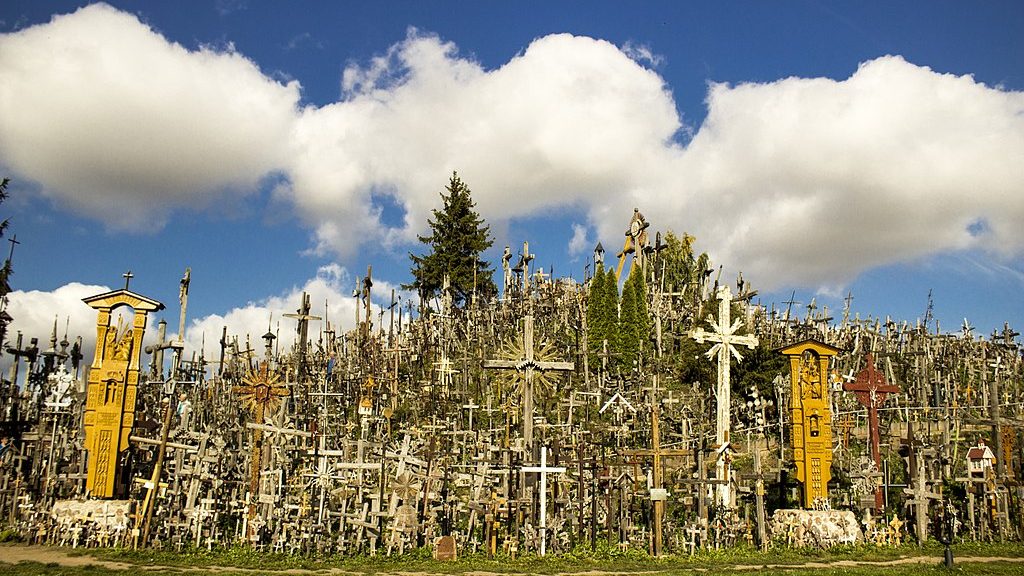The Hill of Crosses is a symbolic pilgrimage site in Lithuania.
In the northern part of Lithuania, about 12 kilometers from the city of Šiauliai, there is a place that is both fascinating and mystical, of spiritual and historical importance: the Hill of Crosses ("Kryžių Kalnas" in Lithuanian). This tiny hill is one of the most unique pilgrimage sites in Lithuania, attracting thousands of visitors from all over the world every year.
Pilgrims bring crosses made of a wide variety of materials – wood, metal, stone, but other exotic materials are also found – to the approximately 10-meter-high hill to strengthen their supplications and as a sign of their gratitude. Visitors come at all times of the year, often for weddings, births and marriages.
This is how the Mountain of Crosses became a symbol of resistance
The hill itself is the remains of a medieval earthen castle. According to the legend, the fortress belonging to the land of Zemaitia was attacked and the villages were set on fire. The survivors jumped into the fire voluntarily rather than live in slavery to the conquerors. At that time, the conquerors understood that this people could not be subjugated and broken, and they stood aside. According to legend, the first cross was given to the heroes of the fairy tale.
Relatives of soldiers killed in battles and buried in an unknown place are said to have erected crosses here as early as the 14th century. However, written traces of the custom of placing crosses only refer to the beginning of the 19th century.
The uprisings against Russian rule in 1831 and 1863 were crushed. The survivors tried to keep the national self-consciousness alive by erecting and caring for the crucifixes. Several paintings by Mikalojus Konstantinas Čiurlionis, made at the end of the 19th century, already show at least a thousand crosses.
After the First World War, independent Lithuania was created and the hill was temporarily neglected, so the number of crosses decreased to fifty. After the Soviet occupation in 1940, however, thousands of crosses stood on the hill again.
The Soviet government, however, did not take kindly to this, and on three occasions, in 1961, 1973 and 1975, they smashed the wooden crosses, the metals were sent to smelters as waste, the hill was bulldozed, and its place was covered with garbage.
The Lithuanians, on the other hand, rebuilt the hill in a few weeks and replaced the crosses as well. This endurance made the Hill of Crosses a symbol of the Lithuanian national resistance, and at the same time it became a symbol of the stand for religious freedom.
In response to this, the Soviet leadership considered flooding the hill with water from a hydroelectric power plant to be built on a nearby river, but this ultimately failed.
A symbol of faith and hope
In March 1990, when Lithuanian independence was declared, there were already around sixty thousand crosses on the hill.
On September 7, 1993 II. Pope János Pál also visited the Hill of Crosses, where he celebrated open-air mass in front of a million believers. In his speech, he called the Hill of Crosses a symbol of faith and hope, which further increased the symbolic importance of the place. During his visit, he entrusted the Franciscan order with taking care of the pilgrimage site and building a monastery. This happened, after two years of construction, the building was inaugurated in 2000. In 1994, the Vatican also presented a large crucifix to the mountain.
The exact number of crosses is unknown, but it was estimated to be around 55,000 in 1990 and around 100,000 in 2006.
Featured Image: Wikimedia Commons













